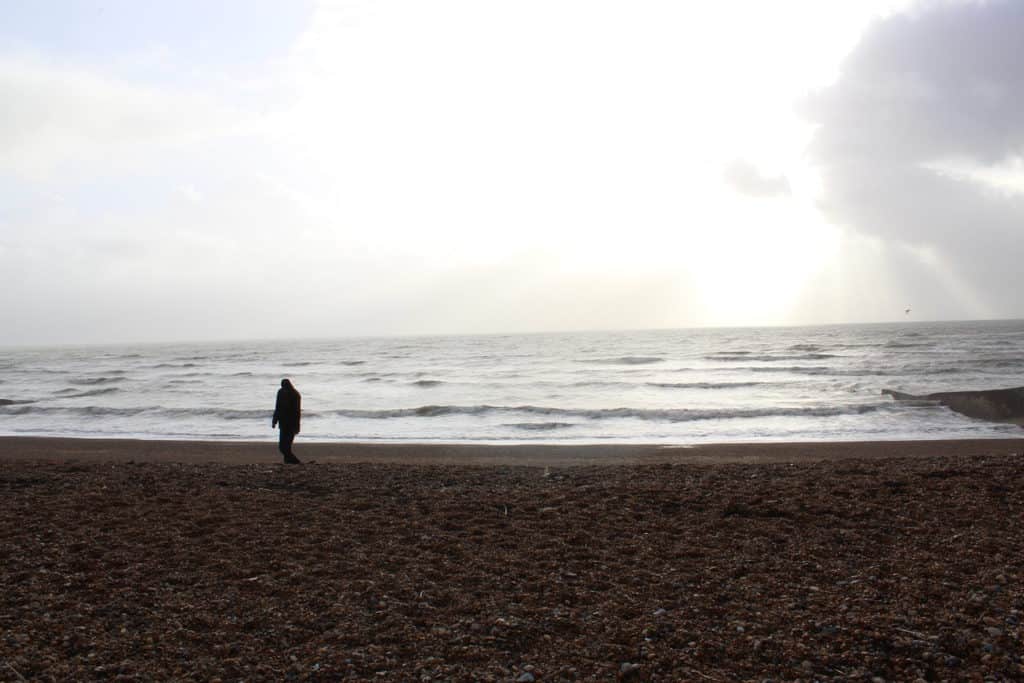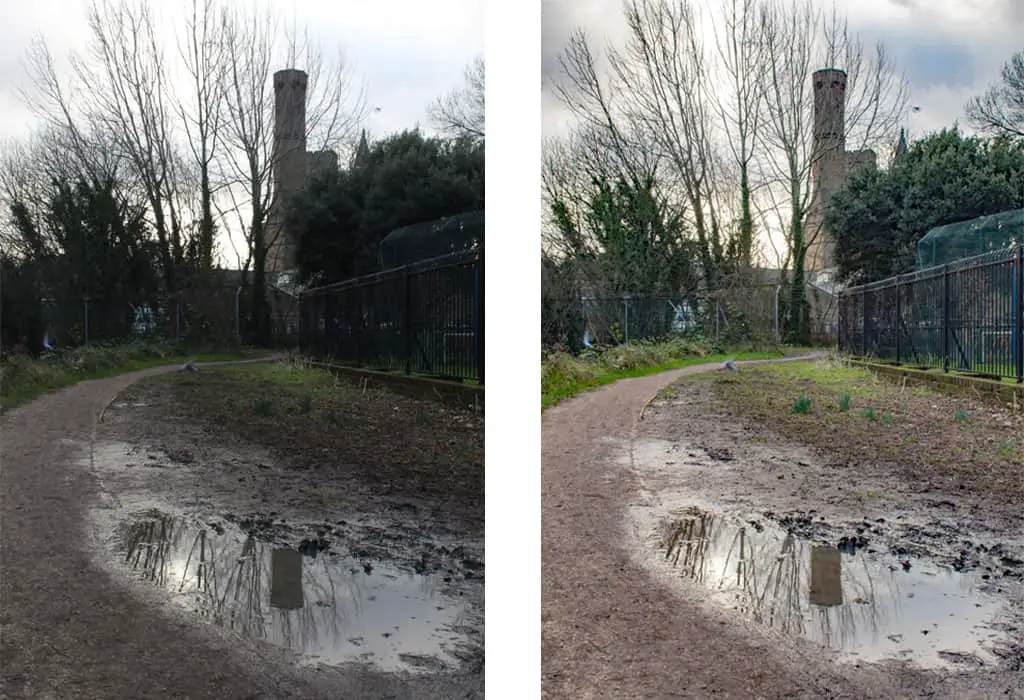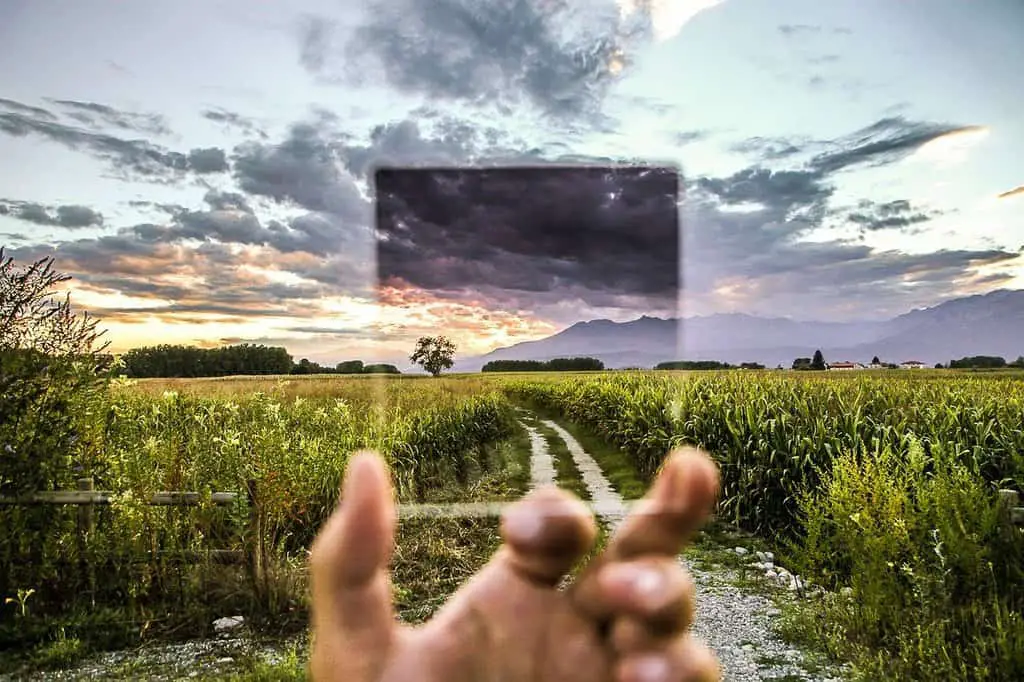Your camera can’t capture everything that it sees. It has a luminance range that it can observe and record. If you are presented with a scene that has high contrast with very bright highlights and very dark shadows, it may struggle to record the full breadth of those two extremes and all the tonal steps in between. This is because the camera has a fixed Dynamic Range from which it cannot deviate in a single photograph. But what is Dynamic Range?
Dynamic Range in photography is the limit of the luminance range of tones between the darkest and the brightest that a camera sensor can capture in an image. It is measured in “stops” but expressed as a “contrast ratio”. A 10 stop range camera has a ratio of 1024:1. (2 to the power of 10).


There are several Dynamic Ranges to consider when you are about to take a photograph:
- The Dynamic Range of your camera’s sensor; the range of luminance tones that you can actually record.
- The Dynamic Range of your eyes; what detail you can observe and perceive in the shadows and highlights;
- The Dynamic Range of the scene that you are attempting to capture.
They are quite different and what the camera produces can be quite disappointing compared to your own view of the scene. Read on to discover why this happens and for some tips on how to ameliorate the problem.
Illustrated Guide to Dynamic Range in Photography
Dynamic Range of a Camera Sensor
The average dynamic range of a camera sensor is approximately 10 stops giving it a “contrast ratio” of about 1000 : 1. Some are capable of going way higher than this; up to 15 or 16 stops giving them an impressive “Contrast Ratio” of between: 32,000 : 1 and 65,000 : 1.
If the Dynamic Range of the scene exceeds the range of your camera’s sensor you will produce a compromised image. The dynamic range of the camera may not be visible in the image though as it still gets confused in high contrast situations. You may be able to tease out more detail in post-processing.

Photo by Oscar J Harper
If you take the average scene meter reading you may lose detail in both the shadows and highlight areas. If you choose to expose for the shadows by metering off the dark areas, you will blow-out (clip) the light areas and risk losing details that will become unrecoverable. If you favour the bright areas and expose for them, you will see good detail in the highlights but there is a danger that you will crush the blacks (clip) into black shadows with no discernable details.
If you have to make a compromise regarding which way to shift the dynamic Range it is often better to expose for the highlights as a bright area looks much better with some detail within it than a blown-out hotspot. It will help to balance the overall image with the dark shadows. Featureless shadows always look better than featureless highlights.
Dynamic Range of The Human Eye
The full dynamic range of a healthy human eye is about 20 Stops. That’s a Contrast Ratio of about 1,000,000 : 1. (A “stop” is a doubling or halving of the measured light so 1,000,000 is approximately 2 to the power of 20). The human eye cannot observe this whole range of luminance in one scene though.
In a well lit, bright daylight scene, the eye can only see a range of about 10 “stops” or a “contrast ratio” of about 1000 : 1, about the same as an average DSLR camera sensor.

Photo by Oscar J Harper
Dynamic Range of The Scene
Photographic opportunities can present themselves in a myriad of forms and a staggering range of luminosities. The Dynamic Range of the scene is the spread of the different luminosities from the darkest shadow to the brightest highlight. Your subject matter could offer you an evenly and well-lit scene and this would present you with relatively low contrast and narrow Dynamic Range.
Conversely, you could be looking at a very high contrast scene with direct sunlight and deep shade and shadows. The dynamic range of such a scene will be much broader and might well be beyond the scope of your camera to capture the whole range of luminous tones. If the dynamic range of the proposed scene does not exceed that of your camera’s sensor you should be able to capture a well-exposed image with good detail in the extreme tonal ranges.

Dynamic Range Comparison – Eye to Camera Sensor
We know that in an evenly, well-lit scene an average DSLR sensor and a human eye will have a similar Dynamic Range of roughly 10 Stops. That is useful to know for photographers when you are preparing to capture a scene on a bright day; what you see will be a good impression of what the camera can record.
However, in dark or low-light scenarios, particularly in high contrast scenes, the human eye can observe a much wider dynamic range, approaching the maximum of 20 stops. In this case, what detail you can see in the shadows will be very different from what the camera can record.

Photo by Oscar J Harper
So, the difference between an eye and a camera to observe the luminance range in these scenarios is about 1000 times different. That far exceeds the dynamic range of a camera which is on average about 10 stops. That means the camera will see a contrast ratio of 1024 : 1, whereas a human eye will pick up a contrast ratio of 1,000,000 : 1. In this case, what you observe will be very different than what the camera can see in the dark shadows and the bright highlights.

Photo by Oscar J Harper
The scene will be predominantly dark but if there are any bright highlights this will massively increase the Dynamic Range of the scene and take it beyond the scope of the camera’s range. The best that you can do in this case is to expose for the highlights and let the shadows be shadows.
See The Dynamic Range in The Histogram
A great place to observe the Dynamic Range of the image captured by the camera is in the Histogram which can be found on the camera or in software like Lightroom. The width of the Histogram graph is the Dynamic Range of your camera. The Histogram shows the full range of tones possible from absolute black on the left side all the way through the full range of tones to pure white on the right-hand side.
Have a look at the graph that has been generated by your last exposure. It will be a solid shape with some bumps and troughs. If the image is well exposed it will have a rising bump in the middle and it will fit between the left and right edge axes without touching them.

Photo by Oscar J Harper
If the exposure graph slams into both edges of the graph axes, that indicates that the dynamic range of the scene is greater than that of the camera sensor and you will experience some clipping (loss of detail) in both the shadows and highlights. You now have to make a decision regarding which details to retain by exposing for the blacks or whites.
If there is a peak at one end and a gap at the other end of the graph you have some latitude to balance the overall appearance by shifting it one way or the other by over or underexposing the scene. You can do this by adjusting one of the settings: Aperture, Shutter Speed or ISO to shift the Histogram graph into the gap. Don’t go too far and hit the vertical axis though or this will cause clipping and loss of data.

The Hidden Dynamic Range Details in RAW Photos
If you would like to glean the maximum possible potential details hidden within the Dynamic Range of your photographs, you should probably shoot in the RAW file format. Most DSLRs will have this option even those at the budget end of the price range. RAW is an uncompressed, unprocessed digital camera file containing all of the data that the sensor recorded at the time of the exposure. It looks flat and dull at first compared to a Jpeg because it has had no enhancement profile applied to it. It is a dull stone waiting to be polished.

Photo by Oscar J Harper
Within the dull flat file, there is an awful lot of colour and tonal data that can be revealed by editing the RAW file in special software that can read them. There is so much data in these files that you can take what looks like a mediocre underexposed picture and transform it by pushing back the shadows to reveal previously unseen detail and colour.
It works both ways, you can apply the software to darken bright areas to bring back invisible details and a range of colours. This can be achieved with software like Adobe Lightroom and Photoshop with “Camera RAW” plugin. The transformations can be quite unbelievable as the process alters a very high contrast image in one with a full range of tones and colour hues.
How to Reduce The Dynamic Range of a Scene
There are ways to decrease the dynamic range of a scene to bring it within the range that the camera can detect. If you are trying to photograph a landscape scene with a dark foreground and a very bright sky, the high contrast scene might have a Dynamic Range that exceeds that of your camera.
The solution is to reduce the Dynamic Range or the “contrast ratio” of the whole scene. You can do this by darkening the bright sky so that the difference between darkest and brightest areas in the scene are closer. To achieve this, we use a “Graduated Neutral Density (ND), Filter”.

This is a Neutral Density filter that is dark at the top and gradually fades out to clear near the middle. It is neutral so it reduces the intensity of all wavelengths of light equally and doesn’t affect the colour in any way. You place the filter over the lens so that the upper, dark shaded area masks the bright sky and effectively makes the sky look a little darker and that reduces the Dynamic Range of the scene.
Now, the whole range of the luminance of the scene falls with the Dynamic Range of the camera so you can achieve a good exposure with details in the shadows and highlights with no clipping.
Another way to bring the dynamic range of the scene into the realm of the camera’s limitations is to use a fill-in flash to lift the shadow areas from black to several “stops” brighter. You can do this if the shadow areas are close enough for the flashgun to have an effect. It could be a remote flashgun on a cable.
If the shadow areas are being created by a back-lighting low sun, you could use a reflector to bounce the sunlight back into the shadow areas to achieve a similar effect to the flashgun.
HDR (High Dynamic Range)
HDR means High Dynamic Range. You can effectively extend the Dynamic Range of a camera to a much wider spectrum of tonal detail and colour hues through a blending of several photos taken at different shutter speeds. Your own eyes can detect a much broader range of tonal detail in a scene than a single photo taken by a camera.
The camera struggles with highly contrasting scenes. The HDR technique can replicate the view of a human eye and pull out more detail and colour from the dark shadows and bright highlights. The technique is to take three or more images at different shutter speeds by bracketing the neutral exposure with one underexposed and one overexposed image.
We vary the shutter speed because if you vary the Aperture to bracket the images, you will get three different depth-of-field results which will vary the areas of focus and make it very difficult to match the photos in post-processing.

Once you have your three images with different exposures you will see that one shows details in the shadows, one is neutral with mid-tone details and one is revealing the details in the highlights. It would be impossible to get all these details in one photo. So now, we combine them.
You import them into Adobe Lightroom, open them up and select all three. Now we go to the “Photo” tab and select “Photo Merge” and “HDR”. Watch the magic happen as the three images get merged together and reveal all the best parts of the three images with the visible details across a broad range of the tones of the photograph.
Related Questions
What is Exposure Compensation in Photography?
Knowledge of this can help you to override the cameras, sometimes incorrect assessment of the exposure of the scene resulting in more professional looking photographs. Read on to learn more.
How do You Take Stunning HDR Photographs?
You can push the dynamic range of your camera by employing the technique of HDR (High Dynamic Range) photography. It involves merging multiple pictures taken at different exposures to produce an improved overall image and you can read more about this useful technique right here in Photography Skool.
How do You Successfully Bracket in Photography?
Bracketing can effectively explore the full possibilities of your camera’s dynamic range across three or more photographs with different exposures. You can read more about this useful technique right here in Photography Skool.
